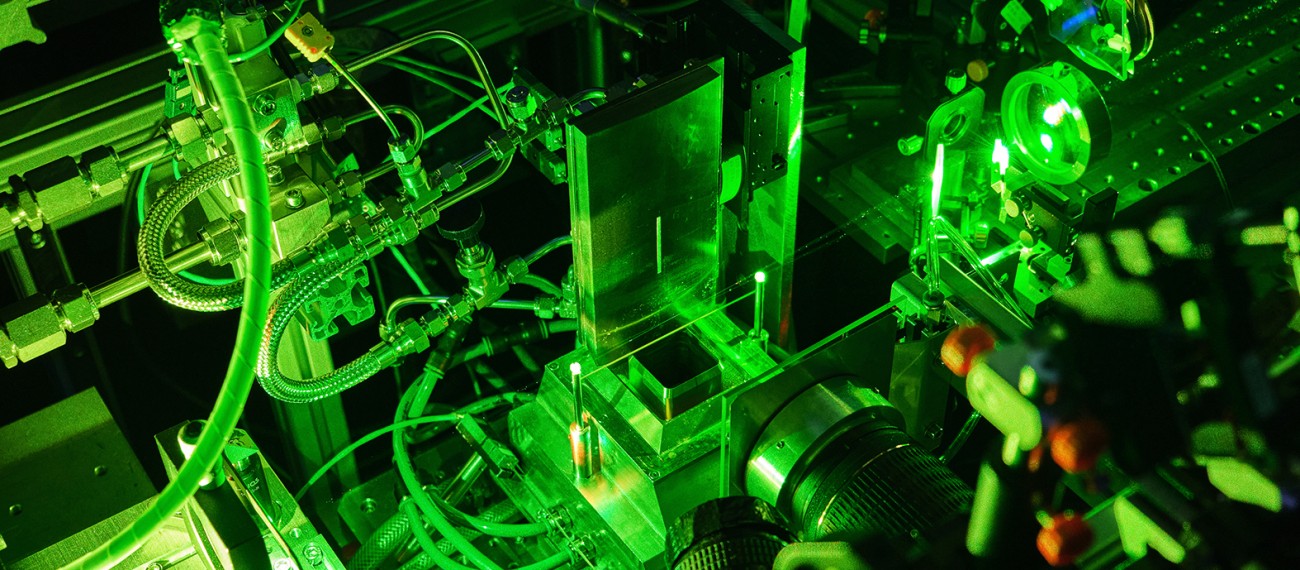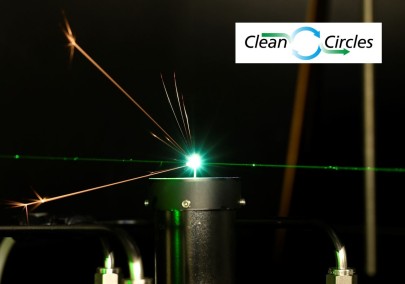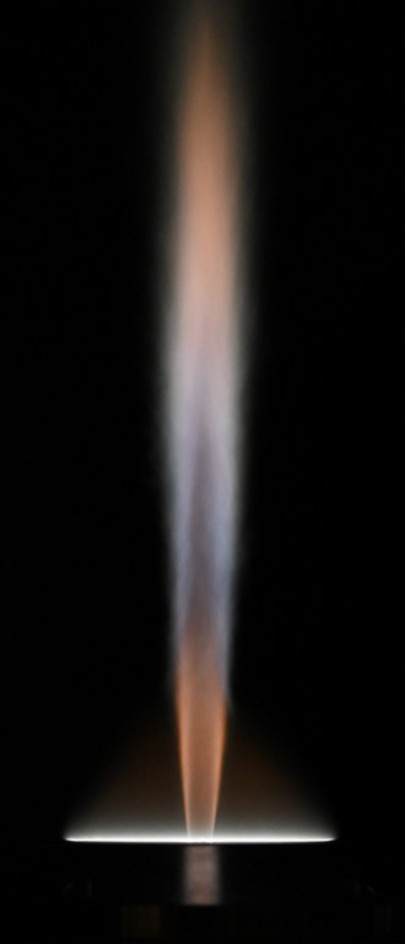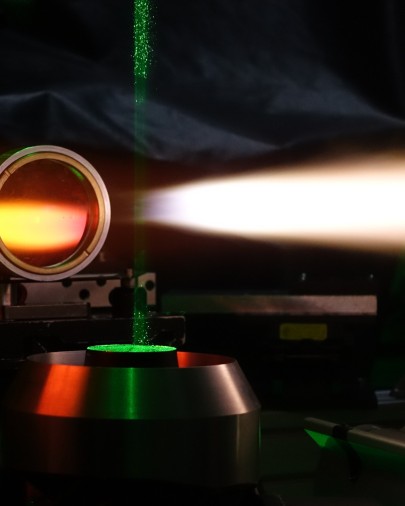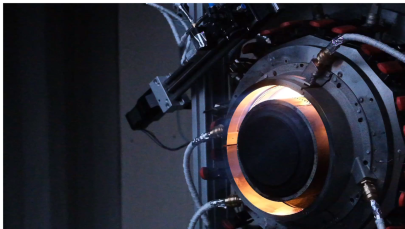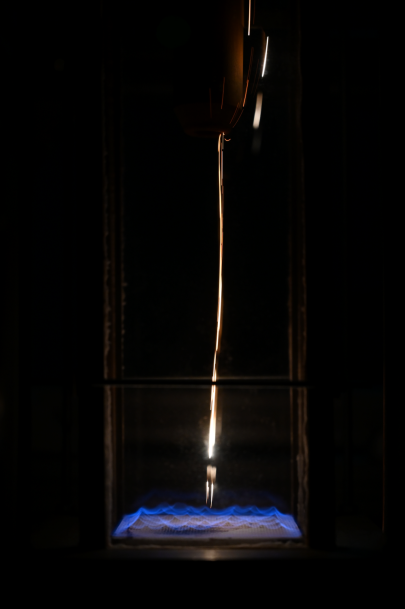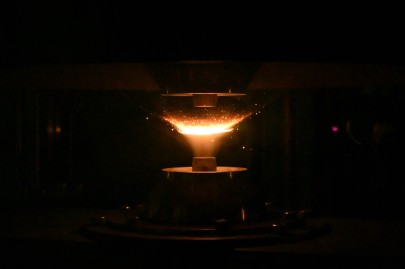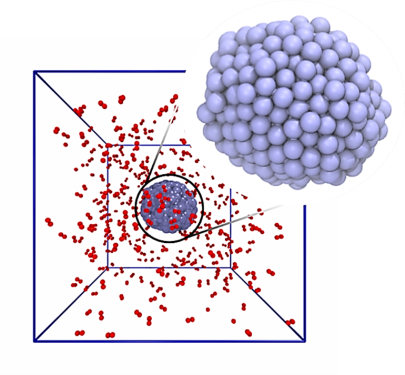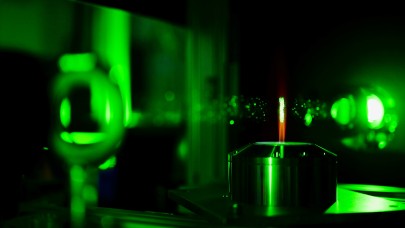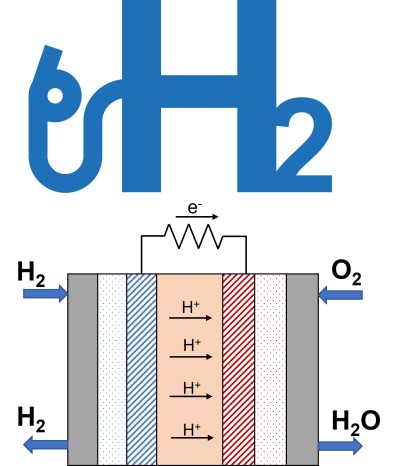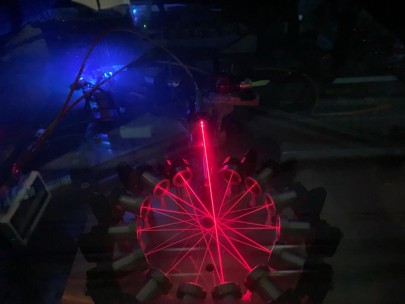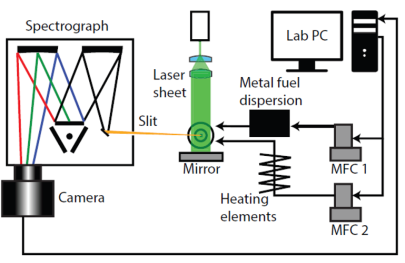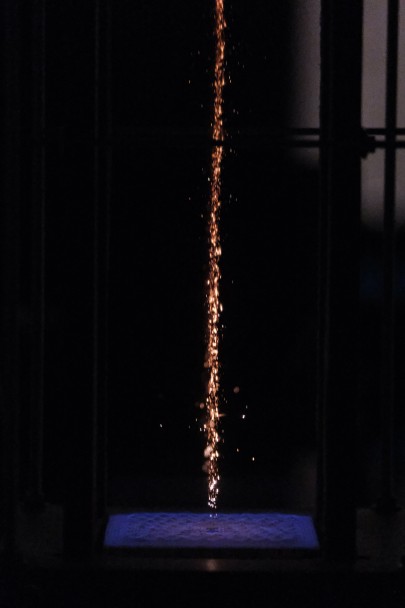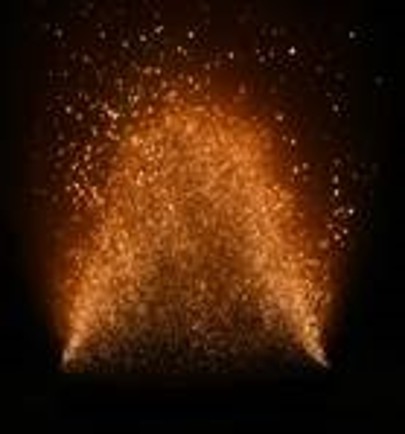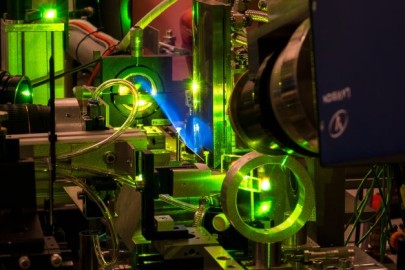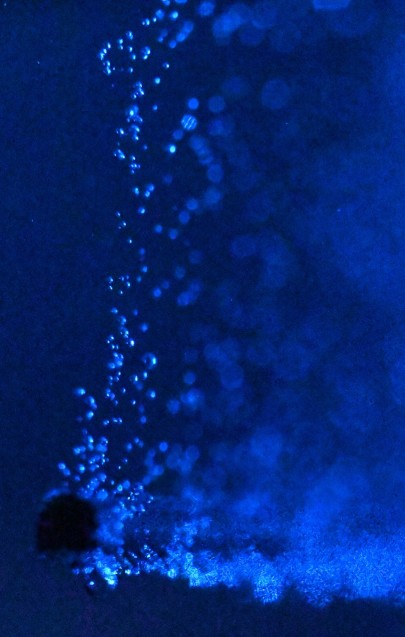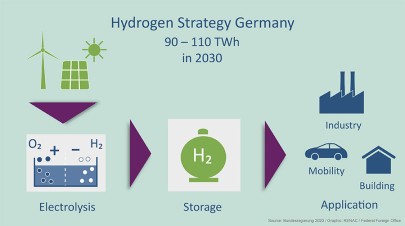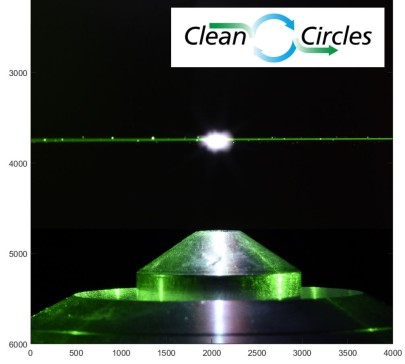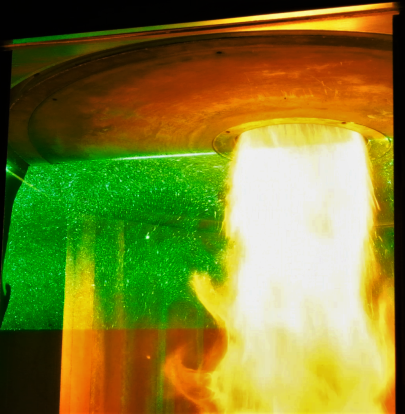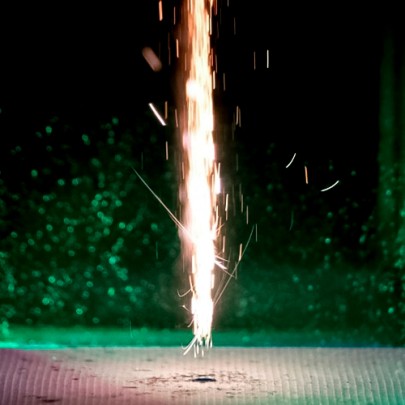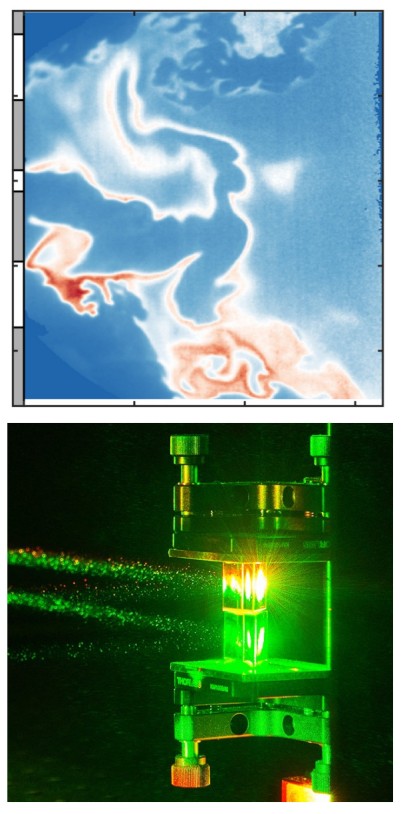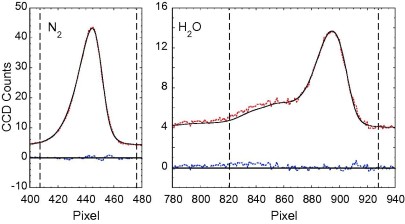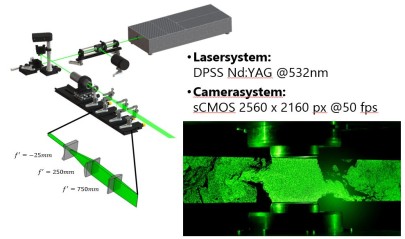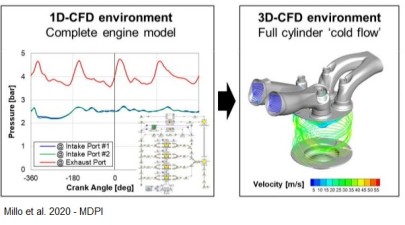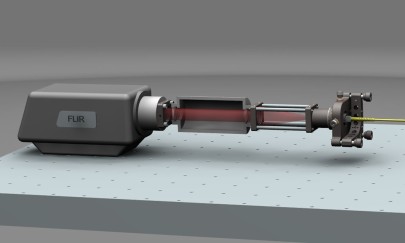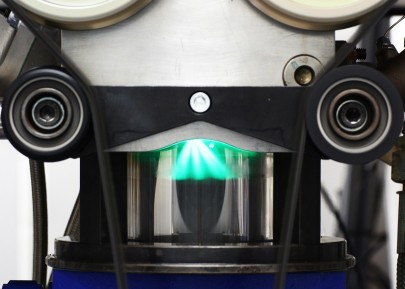For exploring more present opportunities at RSM, please contact Dr. B. Böhm ( boehm@rsm.tu-…) and Dr. S. Wagner ( wagner@rsm.tu-…)
Masterthesis
Within the scope of this Master thesis, a new reactor for analysing heterogeneous catalytic reactions will be integrated into the existing setup and put into operation.
Supervisor: M.Sc. Maria Horst
Masterthesis
Hydrogen combustion in the spark-ignited optical RSM engine is currently being investigated using a variety of fuel delivery methods (premixed, PFI, DI). With the focus on flame propagation and NOx emissions, LIF is selected to investigate fuel-air mixing before and after ignition.
Supervisors: Dr. ir. Max Peters, M.Sc. İrem Alp
Masterthesis
Supervisor: M.Sc. Clemens Hansemann
2025/08/07
Masterthesis, Bachelorthesis
Iron is considered as a promising energy carrier in metal-based energy storage cycles, where energy is released via thermochemical oxidation. As part of this thesis, a laser system for the controlled ignition of single levitated iron particles will be developed, constructed, and commissioned to enable their elemental analysis during combustion using Laser-Induced Breakdown Spectroscopy (LIBS).
Supervisor: M.Sc. Nils Oberndorfer
Masterthesis, Bachelorthesis
As emission regulations tighten and policies evolve to address global climate change, reducing pollutant and greenhouse gas emissions has become a top priority in combustion research. The advanced combustion concept of matrix-stabilized combustion is essential for achieving low emissions and improved flame stabilization in fuel-lean conditions. Combustion within an inert porous matrix differs significantly from conventional burners that use a free flame. Porous media burners (PMBs) rely on the principle that the solid porous matrix internally recirculates heat from combustion products back to the reactants. This internal heat recirculation in PMBs lowers the lean flammability limit of fuel-air mixtures, enabling lower emissions, reduced thermal stresses due to lower flame temperatures, and complete fuel conversion through lean combustion. However, stabilizing these flames within the porous matrix poses challenges due to the complex thermophysical, transport, and heat-transfer processes involved.
The objective of this project is to install a well-designed PMB in the RSM laboratories and perform the first experimental investigation using different pore structures and fuel mixtures.
Supervisor: Dr.-Ing. Tao Li
2024/05/07
Currently no items available.
Your job as a Hiwi at our institute could involve the constructive adaptation of test rigs, the assistance of measurement campaigns involving laser diagnostics or the post-processing of data with advanced algorithms.
Supervisor: M.Sc. Jonathan Franz
Supervisor: Dr.-Ing. Tao Li
Supervisor: Dr.-Ing. Tao Li
Data evaluation of optical measurements in hydrogen reacting flows / Data evaluation of optical measurements in hydrogen reacting flows
Hiwi Positions (Two Positions, 10 h/week)
2024/03/22
Supervisor: Dr.-Ing. Tao Li
The institute of Reactive Flows and Diagnostics focuses on fundamental combustion research and has established world-class combustion laboratories with novel optical diagnostics methods. Advanced imaging methods combing modern lasers and cameras enable an understanding of complex gas and solid combustion processes. Reducing the carbon footprint in the energy sector has become a key challenge to mitigate climate change. Hydrogen (H2) will be widely used as a renewable clean fuel in the future energy mix. However, the combustion characteristics of H2 still require extensive investigation and understandings, especially under lean and turbulent conditions.This requires fundamental research, especially laboratory experiments. Currently, we are looking for one student assistant (HiWi) for our on-going H2 projects.
Supervisor: Dr.-Ing. Tao Li
2025/11/28
Masterthesis
The energy transition requires new technologies to efficiently utilize CO₂-free energy carriers. Within the European research project HYROPE, an innovative two-stage combustion concept for hydrogen gas turbines is being developed. The aim of this thesis is the design and construction of a test rig to investigate hydrogen autoignition processes. A particular focus of the work is on conducting flame stability tests, flow measurements, and the additive manufacturing of the burner.
Supervisor: M.Sc. Maren Werner
2025/11/28
Masterthesis, Bachelorthesis
As part of the energy transition, fossil fuels must be replaced by renewable alternatives. One of the key challenges here is the efficient storage and transport of large amounts of energy. A promising approach is the use of iron powder as a CO₂-free energy source in a closed material cycle: iron is oxidized, the resulting energy is stored, and the iron oxide is then regenerated.
Supervisor: M.Sc. Anton Sperling
Advanced Design Project (ADP)
The continuous measurement and monitoring of exhaust gas components is a key factor in reducing pollutant emissions and improving energy conversion processes. The aim of this work is the development of an automated TDLAS system that ensures reliable and stable signal quality through a self-aligning mirror setup.
Supervisor: M.Sc. Leon Schuhmann
2025/10/28
Masterthesis
As part of this thesis, a newly developed laminar opposed jet burner for metal dust flames will be further adapted and experimentally investigated. The objective is to analyze the influence of key process parameters — such as strain rate, oxygen concentration, and particle size — on the oxidation behavior of iron particles and the resulting laminar burning velocity.
For this purpose, the existing experimental setup will be modified to enable systematic parameter studies under well-defined conditions. Subsequently, measurements will be carried out, the acquired data will be evaluated, and the findings will be documented in a written report. The results will contribute to a deeper understanding of metal combustion processes and support the validation of numerical models for future metal-based energy systems.
Supervisor: Dipl.-Ing. Thomas Krenn
2025/09/28
Masterthesis
Using an established ultra high-speed PIV setup, the direct injection of hydrogen can be investigated. According to choked flow theory, the compressible hydrogen reaches velocities around Mach = 1 near the nozzle exit hole and its evolution can be resolved while it mixes with the ambient. Multiple injectors for future applications are available, as well as strategies to characterize flow losses.
Supervisors: Dr. ir. Max Peters, M.Sc. İrem Alp
Advanced Design Project (ADP), Research Assistant
The aim of this project is to develop LabVIEW code for safely controlling and operating the microwave plasma reactor. A key component of this system will be FPGA (Field Programmable Gate Array) programming, which allows for programmable microchip functionality, alongside the compact RIO system. For those interested in enhancing their LabVIEW skills and expanding their knowledge of software-hardware interaction, please feel free to reach out to me.
Supervisor: M.Sc. Leoni Klingelhöfer
Bachelorthesis, Advanced Design Project (ADP)
The objective of this work is to first set up a burner on a test bench in order to simulate the conditions of a flare system under realistic conditions. Subsequently, the new measuring methods will be examined in detail and the first prototypes for monitoring flames will be developed. In addition, environmental and interference influences on the flame will be analyzed before a long-term test is carried out to ensure permanent functionality. Finally, a compact, robust measuring device is to be designed that functions as a reliable flame monitor and detects the presence or extinction of the flame.
Supervisor: M.Sc. Philip Linke
Masterthesis, Bachelorthesis
As global climate policies become increasingly stringent, reducing pollutant and greenhouse gas emissions has become a paramount objective in combustion research. Hydrogen-powered combustors promise to reduce pollutant emissions, particularly NOx, while enhancing efficiency and performance under extreme conditions. However, harnessing hydrogen's potential requires overcoming significant technical challenges, particularly in designing combustors that can operate under extreme conditions while minimizing emissions. A better fundamental understanding of hydrogen combustion requires urgently experimental research efforts. This project focuses on developing a lab-scale hydrogen-powered combustor capable of operating under high-temperature, high-pressure, and high-turbulence conditions.
Supervisor: Dr.-Ing. Tao Li
Masterthesis, Bachelorthesis
As the push for sustainable energy solutions intensifies, the combustion of biomass solid fuels in ammonia (NH3)-enriched atmospheres presents a promising path forward. This approach not only leverages renewable biomass resources but also explores the potential of ammonia as a carbon-free hydrogen carrier and fuel. To deepen our understanding of the combustion dynamics and emission characteristics under these conditions, we propose the development of a novel laminar flow reactor specifically designed for optical measurements of biomass solid fuel flames in an NH3-enriched atmosphere.
Supervisor: Dr.-Ing. Tao Li
Masterthesis
Hydrogen can be used both as an environmentally friendly fuel and as a storage medium for solar and wind energy. However, only a negligible proportion of hydrogen is currently produced directly from renewable energies using electrolysis. To improve the efficiency of this process, the formation of bubbles at the electrode is therefore being investigated. For this purpose, the bubbles are already being examined using optical measurement technology. However, simultaneous flow measurement is desirable for a better understanding of the process.
Supervisor: M.Sc. Jonathan Franz
Advanced Design Project (ADP)
Maritime shipping transports around 80 % of global trade and is responsible for 2-3 % of the total greenhouse gas emissions. The International Maritime Organization (IMO) is calling for a 40% reduction in greenhouse gas emissions by 2030 compared to 2008 levels, which cannot be achieved with the current state of technology on using alternative fuels such as hydrogen or ammonia in combustion engines. As a result, e-methanol is being investigated for retrofitting of the currently existing shipping fleets.
At RSM a new flow bench test rig is being designed to investigate the methanol spray and wall wetting in a scaled cylinder head. The mechanical setup is almost completed, so the next steps are the implementation of a LabView-software for injections and datalogging with the aim of having first visualizations of the spray in the geometry.
Supervisor: M.Sc. Sandra Schary
Entwicklung und Anwendung eines Auswertetools zur Untersuchung digitaler Hologramme für die optische Messung in Eisenpartikel-Flammen
Development and application of a digital holography evaluation tool for optical diagnostics within iron particle flames
2024/03/04
Masterthesis
Supervisors: Dipl.-Ing. Thomas Krenn, Dr.-Ing. Christopher Geschwindner
Advanced Design Project (ADP)
Um fossile Brennstoffe als dominierende Antriebsarten zu verdrängen, ist ein Mix an neuen Antriebsarten von Nöten. Als vielversprechend gilt dabei neben batteriebetriebenen Elektroautos die Energieversorgung mit einer Brennstoffzelle, welche insbesondere im Schwerlastverkehr ihre Vorteile hat. Die Brennstoffzelle besitzt gegenüber Batterien den Vorteil, dass das Nachtanken mit neuem Brennstoff – im mobilen Sektor i. d. R. Wasserstoff – erheblich schneller geht als der Aufladevorgang einer Batterie.
Supervisors: M.Sc. Clemens Hansemann, M.Sc. Matthias Bonarens
Masterthesis
Das Fachgebiet Reaktive Strömungen und Messtechnik (RSM) nutzt Laser-diagnostische Methoden zur messtechnische Erfassung komplexer Vorgänge in der Gas- und Feststoffverbrennung. Um die Zusammensetzung von Gasen zu untersuchen, bietet abstimmbare Diodenlaser-Absorptionsspektroskopie (TDLAS) ein Messverfahren, das zeitlich hochaufgelöst in-situ verschiedenste chemische Spezies detektieren kann. Multipfadzellen bieten die Möglichkeit, durch die Anordnung optischer Elemente die Absorptionsstrecke zu erhöhen und damit die Nachweisgrenzen für die Spezieskonzentrationen zu erweitern. Eine spezielle Multipfadzelle ist die Ringzelle, in der Spiegel ringartig angeordnet werden.
Aufgabe dieser Arbeit ist es zunächst durch Simulation und Literaturrecherche ein Verständnis für Ringzellen zu erarbeiten. Anschließend wird eine Ringzelle für einen realen Prozess ausgelegt und konstruiert. Ziel der Arbeit ist es, die Zelle an einem institutseigenen Abgasprüfstand zum Einsatz zu bringen und in einer Messkampagne die Robustheit im Prozess zu untersuchen.
Supervisors: M.Sc. Philip Linke, M.Sc. Matthias Bonarens
Design, construction, and characterization of a laminar slot burner assisted by a nanosecond plasma generator
Entwicklung, Konstruktion und Charakterisierung eines laminaren Schlitzbrenners unterstützt durch einen Nanosekunden-Plasma-Generator
2023/09/11
Bachelorthesis
Chemical energy carriers are essential building blocks for a future carbon-free energy economy, mitigating wind and solar energy fluctuations due to weather and geographical limitations. One suitable candidate is ammonia (NH3) which can be synthesized with renewable energy and are employable for mobile and remote applications. However, pure NH3 is subject to high ignition temperatures, lower laminar burning velocities, narrow flammability limits, and lower extinction strain rates. One very promising technology to overcome these difficulties is to use plasma to enhance ignition and flame. Recent experiments also showed that NOx emission could be largely reduced by introducing plasma into combustion. To better understand the mechanism of plasma impact on reactions, fundamental experiments under well-defined boundary conditions are highly desired.
This project aims to set up a laminar slot burner (LSB) with the assistance of nanosecond plasma discharges. A schematic layout of a conventional LSB is shown in Fig.1 [Boushaki et al.]. The LSB consists of three main parts: a mixer, a homogenizer, and a convergent nozzle. A premixed laminar flame can be stabilized on the burner exist. This existing concept should be adapted for plasma generation with a dielectric barrier discharge (DBD). The DBD should be installed in the position of the parallel nozzle, which mainly consists of two electrodes, a nanosecond high-voltage plasma pulse generator, and corresponding control units. The designed plasma-assisted LSB should have optical access into the nozzle to characterize the plasma homogeneity. This work aims to design, construct and test this burner in the combustion laboratory of RSM.
Supervisor: Dr.-Ing. Tao Li
Adaptierung eines Optical-Flow-Algorithmus zur hochaufgelösten Untersuchung turbulenter Mehrphasenströmungen
Adaptation of an optical flow algorithm for the investigation of turbulent multi-phase flows at high resolutions
2023/09/04
Entwicklung und Anwendung der lasermarkierten Hyper-Spektrum-Thermometrie für die Metallpartikelverbrennung
Development and Application of Laser-marked Hyper-spectrum Thermometry for Metal Particle Combustion
2023/09/04
Masterthesis
Accurate measurement of burning particle temperature is important to understand solid fuel combustion. Currently, the commonly adopted technique for this task is imaging two-color pyrometry, which acquires radiation intensities at two wavelengths and thus the temperature can be derived using Wien’s approximation. However, two-color pyrometry is based on the grey-body assumption, which is not always valid or cannot be easily verified in experiments. Therefore, the accuracy of two-color pyrometry sometimes is uncertain. Hyper-spectrum thermometry is one promising technique that can significantly improve the measurement certainty and accuracy of solid particle temperature. It records the spectra of hot particles over a wide range of wavelength. By compare the recoded spectrum with Planck’s law, often a part the spectrum obeying grey-body emission can be selected and thus particle temperature can be determined more accurately.
Supervisors: Dr.-Ing. Tao Li, Dr. Daoguan Ning
Experimental investigations of turbulent ammonia/hydrogen flames using laser diagnostics
Experimentelle Untersuchungen von Ammoniak/Wasserstoff-Flammen mit Hilfe der Laserdiagnostik
2023/07/03
Masterthesis
Reducing the carbon footprint in the energy sector has become a key challenge of this century that requires global collaborative efforts. Chemical storage of renewable energy, such as wind and solar, followed by thermochemical conversion for energy utilization, is an important pathway to ensure a smooth transition to a carbon-neutral economy. In the future energy mix, hydrogen (H2) will be widely used as a clean fuel, and its combustion characteristics require extensive investigations, especially under lean and turbulent conditions, which is important for gas turbine applications.
In this work, the turbulent flame and flow field structures of NH3/H2 mixtures will be experimentally measured under turbulent conditions. The existing multi-regime burner (MRB), a special design for investigating the transition of premixed and non-premixed combustion, will be used to stabilize turbulent NH3/H2 flames. In the first step, constructive improvements should be performed on the MRB burner and operation conditions will be determined based on fuel mixture and laminar flame properties from simple 1D flame calculations in Cantera. To study the turbulence-flame interactions, the flame reaction zone will be measured by planar laser-induced fluorescence of OH radicals (OH-PLIF). From the OH-PLIF images, the curvature and flame surface density of the reactive flame front can be statistically determined. Simultaneously, the flow field will be determined by particle image velocimetry (PIV) or particle tracking velocimetry (PTV) measurements. By combining PIV with OH-PLIF, the local strain rates and their impact on the flame front topology could be analyzed.
Supervisors: Dr.-Ing. Tao Li, M.Sc. Mahmut Doğrudil
Experimentelle Charakterisierung eines Injektors
Experimental Characterization of an Injector
2023/06/12
Advanced Design Project (ADP)
In order to use novel, regenerative fuels (eFuels, e.g. hydrogen) in engines, their effects on the physical processes must be understood. Port fuel injection (PFI) can be used to produce a lean homogeneous mixture, and then the effects of adding a direct injection can be subsequently investigated.
This work is concerned with characterizing the injectors currently in use in terms of injected mass. Different atmospheric pressures and temperatures have to be considered. After designing the experimental setup, the measurements are to be carried out and evaluated.
Supervisors: Dr.-Ing. Marius Schmidt, M.Sc. Lars Illmann
Development and characterization of a fiber coupling system for mid-infrared free-space lasers
Entwicklung und Charakterisierung eines Faserkopplungssystems für Freistrahllaser im mittleren Infrarotbereich
2023/05/08
Masterthesis, Bachelorthesis, Advanced Design Project (ADP)
Climate change and rising health concerns have led to increasingly strict regulatory emission standards for combustion engines over the past few years.
In order to investigate the compliance with these regulations, special measurement techniques are required. Specifically, in the context of Real Driving Emissions (RDE), compact systems that allow for in situ measurement at engine tailpipe are necessary.
Tunable diode laser absorption spectroscopy (TDLAS) is a measurement technique well suited for this task, as it allows simultaneous high speed in-situ measurement of a variety of gases. A large benefit of this technique is the application of small diode lasers which can be connected via glass-fibers and thus allowing for very small measurement devices outside the vehicles.
The extension of the regulatory requirements made the implementation of new free-space diode lasers necessary, which are not yet fiber-coupled and thus cannot be connected to existing hardware.
The goal of this work is the development and application of a fiber-coupling system for these free space mid-infrared diode lasers.
Supervisors: M.Sc. Henrik Matero, M.Sc. Hardy Hamel
Design and commissioning of a metal particle ignition reactor for iron particle ignition experiments
Konstruktion und Inbetriebnahme eines Metallteilchen-Zündreaktors für Experimente zur Zündung von Eisenpartikeln
2023/05/08
Masterthesis
The project Clean Circles is dedicated to solving global energy problems by using iron as CO2-free, renewable and efficient chemical energy carrier. First, electricity from renewables is used to reduce iron oxide (energy storage). Then, the iron is oxidized to release thermal energy for electricity generation at a different place and time (energy release). In the collaborative research project, scientists and students from different Universities work closely on numerous experiments and simulations.
In this student work, a new metal particle ignition reactor (MPIR) with well-defined boundary conditions should be designed and tested for single iron particle experiments. MPIR will include three modules: electrostatic-based single particle generator, an optically accessible ignition channel, and an external heating system by an annular gas flame. The concept of MPIR originates from the so-called micro-flow reactor (see Fig. 1), which has been successfully applied for gaseous and liquid fuel ignition studies. The advantage of this setup is to study the ignition/reaction kinetic by converting the trainsient process to a space-dependent process. Within this work, this concept should be realized for metal fuel ignition measurements.
The topic is suitable for ADP, Bachelor and Master theses, and the work tasks are adapted accordingly.
Supervisor: Dr.-Ing. Tao Li
Experimental investigations of turbulent hydrogen/methane combustion using advanced laser diagnostics
Experimentelle Untersuchungen von turbulenter Wasserstoff/Methan-Verbrennung unter Verwendung fortschrittlicher Laserdiagnostik
2023/05/08
Masterthesis
Reducing the carbon footprint in the energy sector has become a key challenge of this century that requires global collaborative efforts. Chemical storage of renewable energy, such as wind and solar, followed by thermochemical conversion for energy utilization, is an important pathway to ensure a smooth transition to a carbon-neutral economy. In the future energy mix, hydrogen (H2) will be widely used as a renewable clean fuel. However, its combustion characteristics still require extensive investigations, especially under lean and turbulent conditions, which is crucial for gas turbine applications.
In this work, the turbulent H2 flame and flow field structures should be experimentally investigated by using laser diagnostics measurements. For this purpose, a high-velocity flame supplied by H2 or CH4/H2 mixtures from the central jet will be sustained by a pilot flat flame in a McKenna burner. The jet bulk velocity will be increased from 10 m/s (laminar) to approximately 200 m/s (highly turbulent) while the pilot remains at a constant exit velocity. Reactive mixtures with increasing H2 mole fractions will be used to investigate the preferential diffusion effect of H2 on the turbulent flame behavior. The flame reaction zone will be measured by single-shot planar laser-induced fluorescence of OH radicals (OH-PLIF). Simultaneously, the flow field will be determined by particle image velocimetry (PIV) or particle tracking velocimetry (PTV) measurements. From the OH-PLIF images, the curvature and flame surface density of the reactive flame front should be statistically determined. By combining PIV data, the local strain rate and its orientation to the flame front direction should be analyzed, providing insights into turbulence-chemistry interactions.
Supervisors: Dr.-Ing. Tao Li, Dr.-Ing. Shuguo Shi
Development and application of a modular high-speed FPGA-based laser diode and temperature control system in LabVIEW
Entwicklung und Anwendung eines modularen Hochgeschwindigkeits-FPGA-basierten Laserdioden- und Temperaturkontrollsystems in LabVIEW
2023/05/08
Masterthesis
Climate change and rising health concerns have led to increasingly strict regulatory emission standards for combustion engines over the past few years.
In order to investigate the compliance with these regulations, special measurement techniques are required. Specifically, in the context of Real Driving Emissions (RDE), compact systems that allow for in situ measurement at engine tailpipe are necessary.
Tunable diode laser absorption spectroscopy (TDLAS) is a measurement technique well suited for this task, as it allows simultaneous high speed in-situ measurement of a variety of gases. A large benefit of this technique is the application of small diode lasers which can be connected via glass-fibers and thus allowing for very small measurement devices outside the vehicles.
The Laser Diode and Temperature control (LDC & TEC) of these lasers needs to be very precise but at the same time also compact.
The goal of this work is the software development and application of a high-speed modular FPGA (Field Programmable Gate Array) based Laser Diode and Temperature control system in LabVIEW.
Supervisors: M.Sc. Henrik Matero, M.Sc. Hardy Hamel
Konstruktion und Untersuchung eines Seeders für laminare Eisenstaubflammen
Construction and investigation of a seeder for laminar iron dust flames
2023/04/14
Advanced Design Project (ADP)
Das Fachgebiet Reaktive Strömungen und Messtechnik (RSM) befasst sich mit moderner Verbrennungsforschung. Laser-diagnostische Methoden ermöglichen auf diesem Gebiet die messtechnische Erfassung komplexer Vorgänge in der Gas- und Feststoffverbrennung.
Im transdisziplinären Forschungsverbund Clean Circles wird ein innovativer Energie-Stoffkreislauf untersucht. Hierbei wird elektrische Energie aus erneuerbaren Quellen in Eisen eingespeichert, welche über thermochemische Oxidation ausgespeichert und in thermischen Kraftwerken rückverstromt werden kann. Hierfür ist es notwendig ein tiefgehendes Verständnis der Oxidationsprozesse der Eisenpartikel zu haben.
Zur Untersuchung der Oxidationseigenschaften von Eisenpartikelgruppen unter verschiedenen Umgebungsbedingungen soll ein Brenner konstruiert bei der eine Eisenstaub/Luft Bunsenflamme stabilisiert werden kann. Zur Erzeugung der zu untersuchenden Suspension ist ebenso der Aufbau eines sogenannten Seeders erforderlich, der die Partikel in die Gasströmung einbringt. Zur Bestimmung der Partikelkonzentration soll ebenso eine Laserextinktionsmessung implementiert werden. Der Prüfstand soll dabei über ein LabView Programm angesteuert werden können, sowie relevante Parameter aufgezeichnet werden.
Supervisors: Dipl.-Ing. Thomas Krenn, M.Sc. Janik Hebel
Entwicklung und Charakterisierung einer Partikeldispersionskammer für räumlich aufgelöste Absorptionsspektroskopie
Development and characterization of a particle dispersion chamber for spartially resolved absorption spectroscopy
2023/04/11
Entwicklung und Charakterisierung der Strömungsgeschwindigkeiten eines Aufbaus für Flammschutzmittel in Grenzschichtflammen
Development and Flow-Velocity Characterization of a Setup for Flame Retardants in Boundary Layer Flames
2023/03/27
Bachelorthesis
A new Topic at the Institute for Reactive Flows and Diagnostics (RSM) is the application of laser diagnostics for the investigation of the effect of flame retardants in flames close to a wall and boundary layer flames.
Flame retardants in polymers are released during combustion and take effect through diverse mechanisms at the surface of the polymer or in the burning gas-phase. In this way flame retardants can reduce the flammability of materials and inhibit the spread of fires and save lives.
This project aims to recreate the scenario of a flame retardant being released from a polymer-surface during a fire. To understand the effect of flame retardants on a flame along a surface a new setup is to be developed, in which a gas can be injected homogeneously from an inlet in a wall. Through this a boundary layer flame can be created and the effect of flame retardants injected into this flame can be investigated.
The goal is to achieve a system that can be investigated experimentally and provide validation for numerical analysis. The design shall therefore be characterized by measuring the velocities of the gas flows using laser diagnostics. For this a PIV (Particle Image Velocimetry) approach is to be set up.
The topic is suitable for a Bachelor- or Master-Thesis and the tasks will be adapted accordingly.
Supervisor: M.Sc. Christoph Möller
Entwicklung eines Reaktors zur Untersuchung von Polymer-Pyrolyseprodukten
Development of a Reactor for the Analysis of Polymer-Pyrolysis Products
2023/03/27
Bachelorthesis
The institute for Reactive Flows and Diagnostics (RSM) works on the topic of modern combustion research. Laser diagnostics enable the investigation of the complex combustion-processes for gas-, liquid- and solid-fuel-combustion. A new Topic at the Institute is the application of laser diagnostics for the investigation of the effect of flame retardants used in polymers.
Flame retardants in polymers are released during combustion together with the other products of the pyrolysis and take effect through diverse mechanisms at the surface of the polymer or in the burning gas-phase. In this way flame retardants can reduce the flammability of materials and inhibit the spread of fires and save lives.
For easier investigation, the release of the pyrolysis products is to be separated from the influenced flame to be investigated. For this purpose, a reactor is to be developed in which polymers can be pyrolyzed in order to collect the released gases and introduce them into a sample volume in a controlled manner.
The topic is suitable for an ADP, Bachelor- or Master-Thesis and the tasks will be adapted accordingly.
Supervisor: M.Sc. Christoph Möller
Entwicklung einer laserdiagnostischen Messmethode zur Bestimmung der atomaren Zusammensetzung von Eisenpartikeln in reaktiven Prozessen
Development of a laser diagnostic measurement method to determine the atomic composition of iron particles in reactive processes
2022/11/29
Masterthesis
Das Fachgebiet Reaktive Strömungen und Messtechnik (RSM) befasst sich mit optischen Untersuchungen reaktiver Strömungen. Einer dieser Messtechniken ist die Laser Induced Breakdown Spectroscopy (LIBS) mittels derer im Rahmen des Clean-Circles-Projekts ein CO2-freier Kreislaufprozess zur Energiespeicherung untersucht werden soll. Speicher mit langen Ausspeicherzeiten und hohen Energiedichten gewinnen bei fortscheidendem Ausbau von erneuerbaren Energien immer mehr Bedeutung. In dem Kreislaufprozess des Clean-Circles-Projekts erfolgt die Einspeicherung der regenerativ erzeugten Energie mittels Reduktion von Eisenoxidpartikeln. Die entstehenden Eisenpartikel können zeitlich und räumlich getrennt durch eine Oxidation (bzw. Verbrennung des Eisens) die Energie wieder ausspeichern.
Zur Entwicklung eines besseren Verständnisses, sowie zur Validierung und Verbesserung von Modellierungen der im Detail ablaufenden Prozesse während der Reduktion und Oxidation, werden experimentelle Daten benötigt. Hierfür soll die elementare Zusammensetzung von Eisen- und Eisenoxidpartikeln mittels der Laser Induced Breakdown Spectroscopy erforscht werden.
Nachdem in vorangegangenen Masterarbeiten der Messaufbau in Betrieb genommen wurde, soll mithilfe dieser Arbeit die Detektionseinheit noch erweitert werden um den gesamten relevanten spektralen Wellenlängenbereich detektieren zu können. Im Anschluss sollen weitere Parameter untersucht werden, die einen Einfluss auf das Messsignal aufweisen (bspw. Laserpulslänge, zeitaufgelöste Analyse des Plasmas, …). Nach der Durchführung verschiedener Messreihen sollen zwei Auswertemethoden zur Bestimmung des Fe-O-Verhältnisses der einzelnen Partikel getestet und gegeneinander verglichen werden.
Supervisor: M.Sc. Maximilian Dorscht
Ignition and burn time of single iron particles in oxygen-enriched atmospheres
Zündung und Brenndauer einzelner Eisenpartikel in sauerstoffangereicherten Atmosphären
2022/10/07
Masterthesis, Bachelorthesis
The project Clean Circles is dedicated to solving global energy problems by using iron as CO2-free, renewable and efficient chemical energy carrier. First, electricity from renewables is used to reduce iron oxide (energy storage). Then, the iron is oxidized to release thermal energy for electricity generation at a different place and time (energy release). In the collaborative research project, scientists and students from different Universities work closely on numerous experiments and simulations.
In this thesis, the ignition and burn time of single iron particles should be experimentally investigated. Using an existing laminar flow reactor, iron particles will be seeded in high-temperature and oxygen-rich environments, which are generated by lean methane flames. The ignition delay time and entire burn time will be measured with high-speed scientific cameras. At the same time, the particle size will be in-situ detected by measuring the shadow of particles. Different particle sizes will be investigated with increasing oxygen concentration in the gas atmospheres. By evaluating the data, the influences of particle size and oxygen concentration on the particle ignition and burn time should be focused on. This would provide a better understanding of oxidation stages at the single-particle level.
Supervisors: M.Sc. Anton Sperling, Dr.-Ing. Tao Li
Experimentelle Untersuchung der Blasendynamik während Alkalischer Wasserelektrolyse
Experimental investigation of bubble dynamics during alkaline water electrolysis
2022/10/04
Quantifizierung der Messfehler von Line-of-Sight-Methoden für die Charakterisierung partikelbeladener Strömungen mithilfe von Imaging-Simulationen
Quantification of measurement errors of line-of-sight methods for the characterization of particle-laden flows using imaging simulations
2022/07/04
Bachelorthesis
Partikelbeladene Strömungen sind in einer Vielzahl von Anwendungen in Natur und Technik allgegenwärtig. Dies umfasst beispielsweise die thermochemische Oxidation von Eisenstaub in einem Brenner oder den Transport von Sedimenten in Flüssen oder Wolken. Zur experimentellen Untersuchung der physikochemischen Phänomene in solch komplexen Strömungen liefern optische Methoden wie die Diffuse Back-Illumination (DBI) Daten, deren Messfehler unter anderem aufgrund von hohen Partikeldichten sehr groß werden können.
Eine Quantifizierung der Messfehler und deren Einflussparameter erfordert die gleichzeitige Kenntnis der wahren und gemessenen Größen. Da dies in der Realität jedoch nur unter eingeschränkten Bedingungen möglich ist, soll eine solche Messung in Software simuliert und die Messfehler des optischen Systems idealisiert quantifiziert werden. Ein solches Imaging-Tool wurde am RSM bereits erfolgreich programmiert und eingesetzt und soll innerhalb dieser Arbeit weiter verbessert werden. Hierbei soll das Tool insbesondere genutzt werden um die wichtigsten Einflussgrößen auf die Messfehler unterschiedlicher Parameter wie Partikelanzahldichte, -größe, -volumen etc. zu identifizieren und Handlungsanweisungen für Experimentatoren abzuleiten. Hierzu sind sowohl Kenntnisse der analytischen Geometrie im Kontext von Computer Vision, der Programmierung solcher Zusammenhänge in MATLAB und der Datenauswertung hilfreich.
Supervisor: Dr.-Ing. Christopher Geschwindner
Design and commissioning of a flat flame burner for studying premixed NH3/H2 combustion
Konstruktion und Inbetriebsnahme eines Flachflammenbrenners zur Untersuchung der Verbrennung von vorgemischtem NH3/H2
2022/06/13
Masterthesis, Bachelorthesis
The institute of Reactive Flows and Diagnostics focuses on fundamental combustion research and has established world-class combustion laboratories with novel optical diagnostics methods. Advanced imaging methods combing modern lasers and cameras enable understanding complex processes in gas and solid combustion.
Reducing the carbon footprint in the energy sector has become a key challenge of this century that requires global collaborative efforts. Germany has committed to achieving carbon neutrality by 2045. Chemical storage of renewable energy such as wind and solar, followed by thermochemical conversion for energy utilization, is an important pathway to ensure a smooth transition to a carbon-neutral economy. The carbon-free nature of hydrogen (H2) and ammonia (NH3) has attracted considerable attention as potential substitutes for carbonaceous fuels. Both hydrogen and ammonia have very distinct combustion characteristics compared to hydrocarbons. Strategically cofiring NH3 and H2 appears to be well suited to remedy the difficulties in utilizing either fuel. However, NH3 and NOx emission and combustion instabilities are of critical importance in NH3/H2 combustion. To enable industrial facilities to be operated with NH3/H2 blends, fundamental understandings of the combustion characteristics under various conditions are urgently needed.
For studying both emission and flame stabilization, quantitative multi-scalar data are of essential importance and provide novel insights into combustion chemistry. Simultaneous measurements of temperature and concentration of major species are only possible with combined Raman/Rayleigh scattering. However, due to incomplete spectral data libraries for high temperatures, this method requires careful calibrations in a flame with know temperature and concentrations, usually in a flat flame burner. Previous burner design used for hydrocarbon fuels are not suited for operating with NH3/H2 fuels. A new flat flame burner needs to be constructed and tested for a large variety of operation conditions (e.g., mixtures and equivalence ratio). The burner should be experimentally characterized using advanced laser diagnostics.
The topic is suitable for both Bachelor and Master theses, and the work tasks are adapted accordingly.
Supervisor: Dr.-Ing. Tao Li
Experimental Investigation of the Atomization Process of Polymer-based Formulations using a Spray Dryer NozzleExperimentelle Untersuchung des Zerstäubungsprozesses von Formulierungen auf Polymerbasis unter Verwendung einer Sprühtrocknungsdüse
Experimentelle Untersuchung des Zerstäubungsprozesses von Formulierungen auf Polymerbasis unter Verwendung einer Sprühtrocknungsdüse
2022/05/13
Masterthesis
In the pharmaceutical industry, the conversion of crystalline drugs to amorphous solid dispersions (ASDs) is a critical step in the process of manufacturing consumable tablets. To accomplish this, crystalline drugs are mixed with a polymer using a solvent, then the mixture is atomized through a spray drying nozzle, and finally the solvent is evaporated leaving behind the manufacturing-friendly ASDs.
To effectively conduct a spray drying process, spray atomization is the key aspect. Therefore, the goal of this project is to use state-of-the-art laser diagnostic techniques to improve the physical understanding of the atomization process of the GEA PSD-1 spray dryer for the manufacturing of ASDs. This novel approach will first employ particle image velocimetry (PIV) to characterize the velocity field of the gas phase near the nozzle. Diffuse back-illumination (DBI) will then be used to characterize the spray morphology (opening angle, penetration length) of a mixture of the polymer Copovidone and a solvent. After characterizing the spray and flow with several operating conditions, correlations will be derived for the calculation of spray characteristics of the GEA PSD-1 nozzle.
Supervisors: Dr.-Ing. Cooper Welch, Dr.-Ing. Florian Ries
Laserdiagnostische Untersuchung der atomaren Zusammensetzung von Eisenpartikeln in Energiespeicherprozessen
Laser Diagnostic Study of the atomic Composition of Iron Particles in Energy Storage Processes
2022/05/02
Masterthesis
Das Fachgebiet Reaktive Strömungen und Messtechnik (RSM) befasst sich mit optischen Untersuchungen reaktiver Strömungen. Einer dieser Messtechniken ist die Laser Induced Breakdown Spectroscopy (LIBS) mittels derer im Rahmen des Clean-Circles-Projekts ein CO2-freier Kreislaufprozess zur Energiespeicherung untersucht werden soll. Speicher mit langen Ausspeicherzeiten und hohen Energiedichten gewinnen bei fortscheidendem Ausbau von erneuerbaren Energien immer mehr Bedeutung. In dem Kreislaufprozess des Clean-Circles-Projekts erfolgt die Einspeicherung der regenerativ erzeugten Energie mittels Reduktion von Eisenoxidpartikeln. Die entstehenden Eisenpartikel können zeitlich und räumlich getrennt durch eine Oxidation (bzw. Verbrennung des Eisens) die Energie wieder ausspeichern.
Zur Entwicklung eines besseren Verständnisses, sowie zur Validierung und Verbesserung von Modellierungen der im Detail ablaufenden Prozesse während der Reduktion und Oxidation, werden experimentelle Daten benötigt. Hierfür soll die elementare Zusammensetzung von Eisen- und Eisenoxidpartikeln mittels der Laser Induced Breakdown Spectroscopy erforscht werden.
Nachdem in einer vorrangegangenen Masterarbeit ein erster vereinfachter Messaufbau in Betreib genommen wurde soll dieser mithilfe der erarbeiteten Verbesserungen optimiert werden. Hierbei ist vor allem die Inbetriebnahme einer verbesserten Detektionseinheit zur Analyse der Plasmastrahlung entscheidend für eine genaue Bestimmung des Fe-O-Verhältnisses der einzelnen Partikel. Die Aufgabe umfasst anschießend die Durchführung von Experimenten unter Variation verschiedener Einflussparameter auf das LIBS-Signal. Mit den erzielten Daten ist anschließend ein Auswertungsschema zu Erstellen mit dem vom LIBS-Signal der Oxidzustand einzelner Partikel bestimmt werden kann.
Supervisor: M.Sc. Maximilian Dorscht
Entwicklung eines Partikelabscheiders zur Prozessierung von Eisenpulver
Development of a particle separator for processing iron powder
2022/04/25
Entwicklung eines Partikelanalysators zur Bestimmung der Partikelgrößenverteilung
Development of a particle analyser for particle size distribution measurements
2022/04/25
Advanced Design Project (ADP)
Supervisors: M.Sc. Janik Hebel , Dipl.-Ing. Thomas Krenn
Laserinduzierte Fluoreszenz: Messung von Mischungsvorgängen
Laser-induced fluorescence: measurement of mixing processes
2022/03/24
Bachelorthesis
Laser-based optical diagnostics can be used to investigate complex physical systems non-intrusively and with high resolution. Laser-induced fluorescence (LIF) is suitable for obtaining spatially and temporally resolved information about, e.g., temperature or mixing in a flow. Molecules are excited with a laser and the characteristic fluorescence emission is detected with (high speed) cameras.
In this work, the aim is to investigate mixing processes in an optically accessible engine by means of two-color or two-line LIF. The aim of this fundamental experiment is to visualize and characterize the gas exchange between cycles and the interaction between the gas flow and an injected spray.
Within the scope of the work, the exact methodology will be selected for this purpose, the experiment will be set up and carried out, and the collected data will be evaluated and analyzed.
Supervisors: Dr.-Ing. Marius Schmidt, Dr.-Ing. Cooper Welch
Bestimmung der laminaren Brenngeschwindigkeit eines vorverdampften synthetischen Kraftstoffes mittels laserbasierter Messmethoden (PIV / PLIF)
Determination of the laminar burning velocity of a prevaporized synthetic fuel by using laser based methods (PIV / PLIF)
2022/03/06
Optimierung und Inbetriebnahme eines Sensorsystems zur Charakterisierung von Ölfilmen in Elektromotoren
Optimization and commissioning of a sensor system for the characterization of oil films in electric motors
2022/02/25
Untersuchung der Oxidationseigenschaften von Eisenproben in einem optimierten Versuchsaufbau einer laminaren Eisenpartikel-Luft-Flamme
Investigation of the oxidation properties of iron samples in an optimized experimental setup of a laminar iron particle-air flame
2022/01/25
Masterthesis
Das Fachgebiet Reaktive Strömungen und Messtechnik (RSM) befasst sich mit moderner Verbrennungsforschung. Laser-diagnostische Methoden ermöglichen auf diesem Gebiet die messtechnische Erfassung komplexer Vorgänge in der Gas- und Feststoffverbrennung.
Im transdisziplinären Forschungsverbund Clean Circles wird ein innovativer Energie-Stoffkreislauf untersucht. Hierbei wird elektrische Energie aus erneuerbaren Quellen in Eisen eingespeichert, welche über thermochemische Oxidation ausgespeichert und in thermischen Kraftwerken rückverstromt werden kann. Hierfür ist es notwendig ein tiefgehendes Verständnis der Oxidationsprozesse der Eisenpartikel zu haben.
Um diese Oxidationsprozesse von Eisen in einer laminaren Eisenpartikel-Luft-Flamme untersuchen zu können wurde ein Seeder- und Brennerkonzept entwickelt. In der ausgeschriebenen Masterarbeit ist anhand von diversen Messtechniken dieser Aufbau mit unterschiedlichen Eisenproben zu charakterisieren und zu optimieren. Abschließend sollen Messungen zu den Oxidationseigenschaften der Eisenproben anhand des optimierten Versuchsaufbaus stattfinden und ausgewertet werden.
Supervisor: Dipl.-Ing. Thomas Krenn
Weiterentwicklung eines laser-optischen Sensors zur Erfassung von Flüssigkeitsfilmdicken auf Metalloberflächen
Advancement of a laser-optical sensor for the detection of liquid film thicknesses on metal surfaces
2021/12/13
Weiterentwicklung eines laser-optischen Sensors zur reflektiven Erfassung von Flüssigkeitsfilmdicken auf Metalloberflächen
Improvement of a laser-optical sensor for the detection of liquid film thicknesses on metal surfaces
2021/12/12
Masterthesis
Supervisors: Dr.-Ing. Anna von der Heyden, Dr. rer. nat. Steven Wagner
Applikation von ITO-Beschichtungen: Spray-Visualisierung und Messung der Wandbenetzung eines Spray-G Injektors
Application of ITO-Coatings: Spray visualization and wall wetting measurements of a Spray G injector
2021/11/11
Bachelorthesis
For the analysis of injectors in different combustion chambers, the interaction of the injected fuel quantity with the wall of the combustion chamber is of great importance. Here, fuel accumulates locally and then evaporates only slowly at the surface. In the case of the Spray G injector used, the individual wetting of the different injection plumes is also of interest.
In this work, a novel indium tin oxide (ITO) coating will be investigated for suitability for spray wetting measurements. This material is an electrical semiconductor and at the same time largely transparent in visible light, which means that the wall wetting can be measured using an infrared camera and at the same time the spray can be characterized with visible light (Mie scattering).
Supervisors: M.Sc. Lars Illmann, Dr.-Ing. Marius Schmidt
Characterization of soot formation of solid fuel particles in oxygen-enriched conditions
Charakterisierung des Rußbildung von festen Brennstoffpartikeln unter sauerstoffangereicherten Bedingungen
2021/10/19
Advanced Research Project (ARP)
The institute of Reactive Flows and Diagnostics focuses on fundamental combustion research and has established world-class combustion laboratories with novel optical diagnostics methods. Advanced imaging methods combing modern lasers and cameras enable the understanding of complex processes in gas and solid combustion.
Soot emission is one of the most important issues in the utilization of hydrocarbon fuels. A deep understanding of the soot and nano-sized particle formation in gas and solid fuel flames is an essential aspect of combustion research. In laboratory-scale experiments, in-situ laser diagnostics have been widely established to gain fundamental knowledge. Laser-induced incandescence (LII) has proven to be a powerful tool for particle-concentration and particle-size measurements in combustion systems. This technique has been implemented in previous work and applied for 2D soot imaging measurements in a laminar diffusion flame fueled by ethylene, e.g., in a Gülder-burner configuration. To quantify the soot volume fraction, 1D extinction measurements have been performed simultaneously to calibrate the qualitative LII signals. These combined methods should be further applied for solid fuel combustion studies on the single-particle level. In further steps, in a well-established laminar flow reactor, semi-quantitative 2D LII imaging has been first conducted on bituminous coal and biomass particles. Here, the reaction zone and PAH formation could be visualized at the same time, e.g., by using laser-induced fluorescence (LIF) techniques, to support the interpretation of the soot formation.
The comprehensive experimental data requires intelligent data processing algorithms. Within this work, simultaneously acquired image data should be evaluated in Matlab (image processing tools) using efficient programming structures (object orientated programming). The code structures should be friendly to further extension and maintenance. The main purpose of data evaluation is to extract essential parameters related to soot formation in solid fuel combustion. They are, e.g., 1D absorption ratio, 2D soot volume fraction, soot flame topology, particle positions, particle number density, particle size and shape and etc. Conditional statistical analysis that includes all parameters should be performed in a systematic way to enable a deep understanding of soot formation processes in single particle and particle group combustion.
The topic is suitable for ARP and Master's theses, and the work tasks are adapted accordingly.
Supervisor: Dr.-Ing. Tao Li
Development and Testing of a Machine Learning-based Flame Binarization Technique
Entwicklung und Test einer auf maschinellem Lernen basierenden Flammenbinarisierung
2021/10/06
Masterthesis
The early flame kernel development in modern spark-ignition engines is crucial in determining the efficiency and emissions involved in their operation. An extensive database of early flame images has been acquired by using high-speed planar Mie scattering (from particle image velocimetry) to record the evaporation of seeded oil droplets in an optically accessible single cylinder research engine. To analyze the flame development, the raw images must first be binarized (such that the flame is separated from the particle images).
Despite the availability of advanced digital image processing algorithms, it remains a challenge to accurately binarize experimentally-obtained flame data due to a number of factors such as inhomogeneous lighting, reflections, and noise. The figure to the right shows an example raw image and overlain contours of a flame propagating adjacent to the spark plug. Even though the flame is easily recognizable to the human eye, it is difficult to algorithmically separate the flame from the surrounding features. Therefore, the goal is to use machine learning (ML) techniques such as DeepOtsu or convolutional neural networks, to achieve a more efficient and accurate universal model for flame binarization.
Supervisors: Dr.-Ing. Cooper Welch, Dr.-Ing. Marius Schmidt
Applikation von der SLIPI-Messtechnik: Entwicklung und Aufbau der Messtechnik und Anwendung zur Analyse von Kraftstoffeinspritzungen
Application of the SLIPI measurement technology: development and setup of the measurement technology and application for the analysis of fuel injections
2021/09/06
Masterthesis, Bachelorthesis, Advanced Design Project (ADP)
For the analysis of injectors in different combustion chambers, the injection and distribution of the fuel is of great interest. Hereby the injection penetration length as well as the vaporization rate can be determined and analyzed. The usual illumination of the injection mass by means of conventional LED illumination and Mie scattering leads to multiple scattering of the fuel particles.
In this work, the Structured Light Illumination Planar Imaging (SLIPI) measurement technique will be used for spray analysis. Using the SLIPI technique, scattered light components can be effectively removed from Mie and LIF spray images, revealing spray structures of unprecedented quality.
The topic is suitable for ADPs or Master's/Bachelor's thesis and the work assignments will be adapted accordingly.
Supervisors: M.Sc. Lars Illmann, Dr.-Ing. Marius Schmidt
Bachelorthesis, Advanced Research Project (ARP)
Supervisor: Dr.-Ing. Marius Schmidt
Entwicklung eines MIR-Kameraspektrometers an einem generischen SCR-Prüfstand zur HNCO Detektion
Development of an MIR camera spectrometer on a generic SCR test rig for HNCO detection
2021/09/06
Erweiterung der Kohärenten anti-Stokes Raman-Spektroskopie (CARS) um die Möglichkeit der Gastemperaturbestimmung anhand des O2-Moleküls
Extension of coherent anti-Stokes Raman spectroscopy (CARS) with the possibility of gas temperature determination based on the O2 molecule.
2021/09/06
Entwicklung und Charakterisierung einer beheizbaren Boden-platte für einen generischen Abgaskanal
Development and characterization of a heatable base plate for a generic exhaust duct
2021/05/17
Advanced Design Project (ADP)
Supervisors: Dr.-Ing. Anna von der Heyden, Dr. rer. nat. Steven Wagner
Konzeptionierung stabilisierter Eisenpartikel-Luft Flammen zur Untersuchung grundlegender Verbrennungseigenschaften“
Conceptual design of stabilized iron dust flames for the investigation of basic combustion properties
2021/04/01

